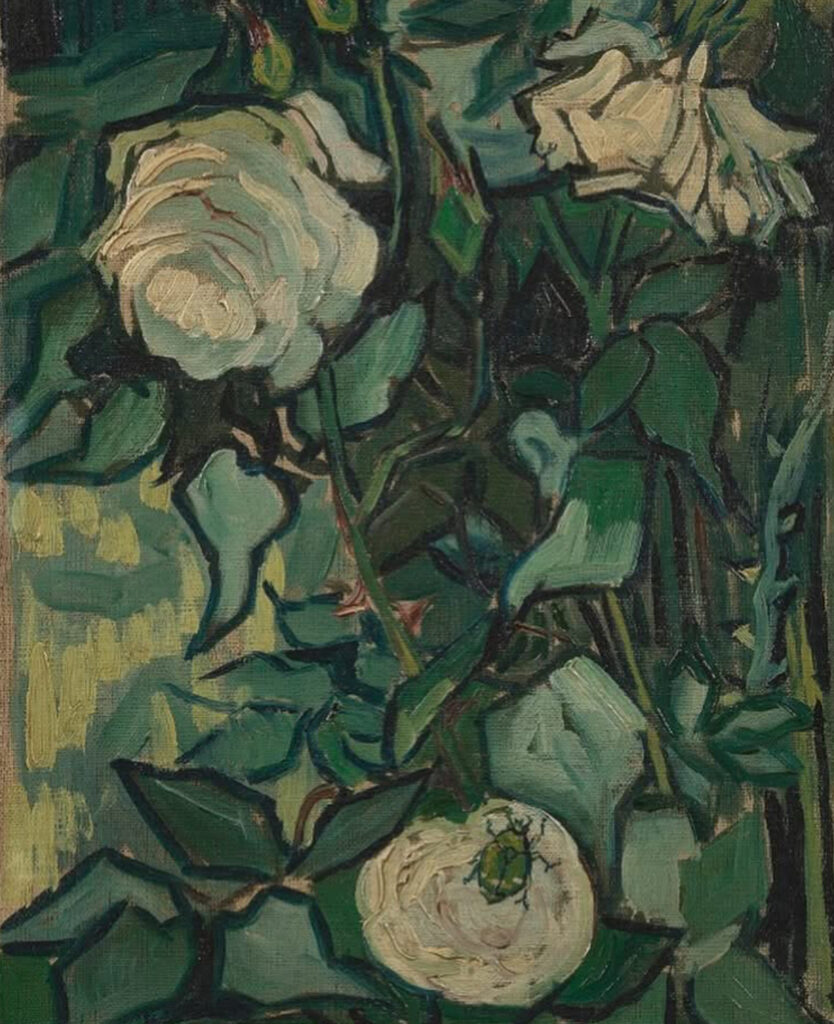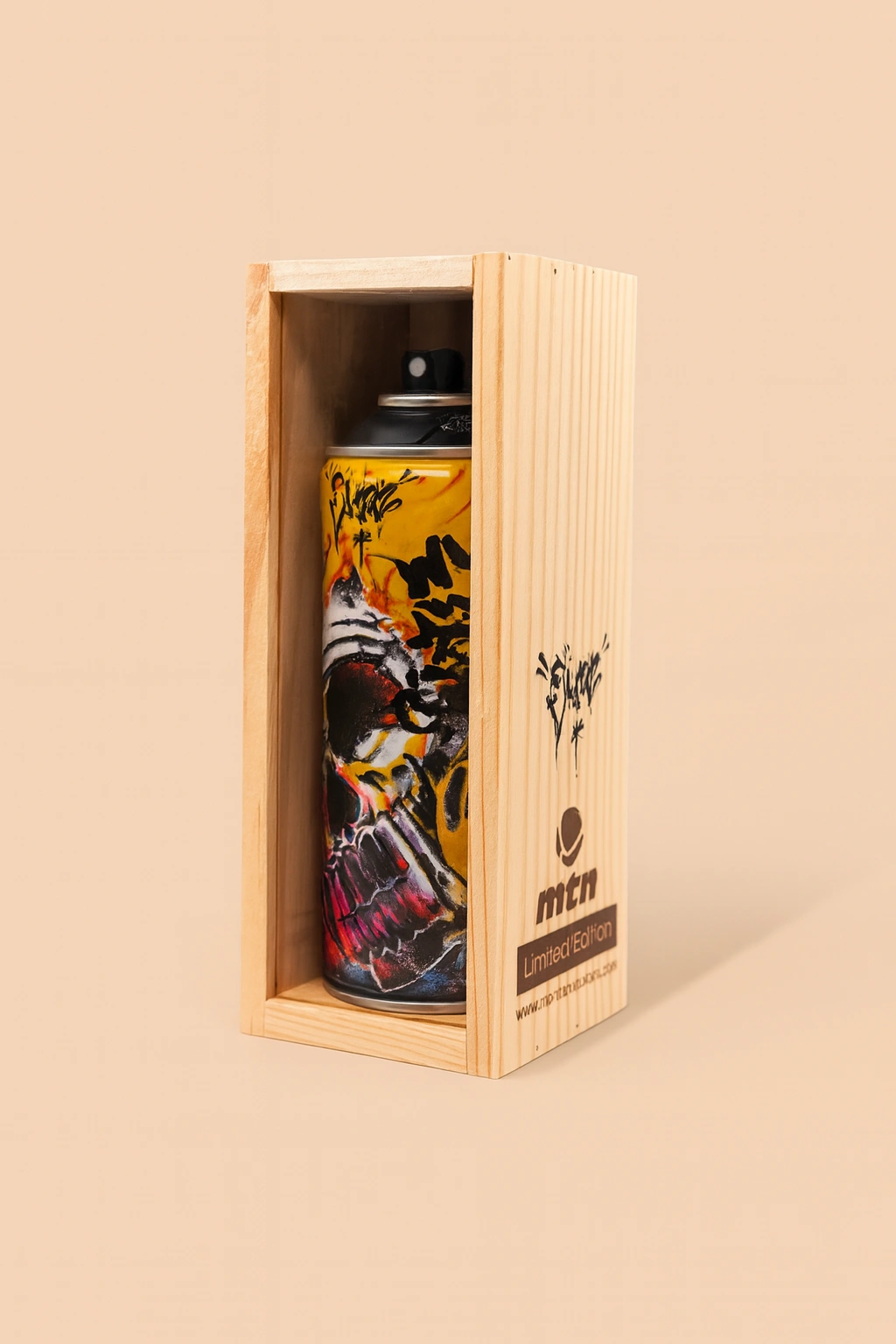In the final months of his life, Vincent van Gogh painted with a furious tenderness. Gone were the furrows of the sun-scorched Provençal fields; in their place came the hush of hospital walls, the stillness of vases, and the trembling fragility of petals. Among the last works he produced before his death in July 1890 was Roses, a deceptively simple oil on canvas measuring 33.5 x 24.5 centimeters. Held now in the Van Gogh Museum in Amsterdam, this small painting radiates a serenity that seems almost impossible when weighed against the turbulence of the artist’s final chapter.
Van Gogh painted Roses in the asylum at Saint-Rémy-de-Provence, where he voluntarily committed himself after a series of psychological crises. These late still lifes—flowers, branches, and blooming arrangements—speak not only to his deep appreciation for nature’s forms but to an urgent need for beauty, harmony, and reconciliation. In Roses, the focus is not on theatricality or anguish, but on subtle interplay: pale petals, curling slightly at their edges, are pressed gently against a background of faint greens and blues, perhaps the mint-tinged walls of the asylum itself. The composition is quiet, but not static. There is energy in the brushwork, in the loops of leaves and stems, in the layers of paint that rise and fall like breath.
Here, roses become more than a decorative subject. They are a symbol of delicacy, transience, and restraint. Their whiteness—today softened to an almost creamy green with age—would have read as purer in Van Gogh’s time. He painted them not in crimson or dramatic bloom but in their most vulnerable, unassuming form. These are not roses at the height of their performance, but in a quiet, contemplative state—some fading, some just beginning to open. It is a still life imbued with the knowledge of mortality, yet free from despair. If anything, it glows with a kind of reconciliation.
In the last letters to his brother Theo, Vincent frequently mentioned flowers. He described them as emblems of calm, as objects of meditation, and—importantly—as a subject through which he could explore color relationships more fully than ever before. While many of his earlier works teetered between impressionism and expressionism, with thick impasto and bold contrasts, Roses marks a departure toward subtle tonal modulation. Each stem is articulated with care, each petal defined not by sharp outlines but by softness—touches of white, soft pinks, gentle ochres merging into a pale green sea.
Though the canvas is modest in size, its internal world is vast. Van Gogh scholars often read Roses as part of a suite—along with Irises, painted around the same time—that shows the artist’s attempt to rebuild himself spiritually through the contemplation of nature. In the controlled environment of the asylum, where he was allowed to paint only under supervision and in carefully circumscribed intervals, the act of painting flowers became a ritual. A salvational gesture. A routine to stabilize the storm.
The choice of subject was not incidental. In classical Western art, roses have long symbolized love, purity, and transience. In Van Gogh’s case, they may also represent a reaching out—a gentle farewell. The softness of the palette, the limited color scheme, and the calm structure of the composition stand in contrast to the agitated energy of earlier pieces like The Night Café or Wheatfield with Crows. Here, there is no looming existential sky. No torment in the brushstrokes. The paint flows in rhythmic pulses. The roses are simply allowed to exist, no grand statement, no philosophical scream.
It is worth noting how little is dramatized. There is no vase; the flowers are presented cropped, rising out of the lower edge of the frame like a memory, suspended in space. This gives Roses a kind of weightlessness, as if the bouquet is floating—or being recalled from a dream. The composition refuses to anchor itself, refusing stillness but also resisting motion. It hovers. As with much of Van Gogh’s late work, the image becomes a visual paradox: brimming with life, yet deeply introspective; luminous, yet subdued; emotional, but not theatrical.
In the context of 1890, a year in which Van Gogh’s mental health remained unstable and his sense of creative purpose was increasingly intertwined with questions of legacy, Roses feels almost like a parting gift. That summer, just weeks after producing this painting, Van Gogh moved to Auvers-sur-Oise to be closer to Theo. There, he would produce some of the most emotionally charged landscapes in the history of modern art—yet none quite so hushed as this.
It is tempting to read too much into the painting. To see it as a coded goodbye, or as evidence of temporary peace before the final unraveling. But what matters, perhaps more than interpretation, is that Roses reminds us of the complexity within stillness. Of the depth within tenderness. Of how the ordinary—the commonplace subject of flowers on canvas—can carry extraordinary weight when filtered through a singular, aching vision of the world.
There’s also something intimate in its scale. Unlike his monumental canvases of wheatfields and stars, Roses invites the viewer in closer. You don’t observe it from across the room—you lean into it, like listening to someone whisper. It’s a painting that asks for presence, not analysis. You don’t decode it. You sit with it.
In this way, Roses functions almost like a letter. Not the urgent, questioning ones he wrote to Theo, but a quieter correspondence—perhaps a note to himself. To look closely at the curling stem, the hesitating petal, the moment before full bloom. To say that even in confinement, even in uncertainty, something beautiful can still emerge. Something can still grow. Something can still reach.
One might imagine Van Gogh at the edge of his canvas, brush in hand, tracing the outline of a rose not as an artist seeking praise, but as a man seeking equilibrium. Each layer of paint a breath. Each flower a meditation. Roses is a final gesture of clarity. Not triumph, not defeat. Just presence.
No comments yet.








